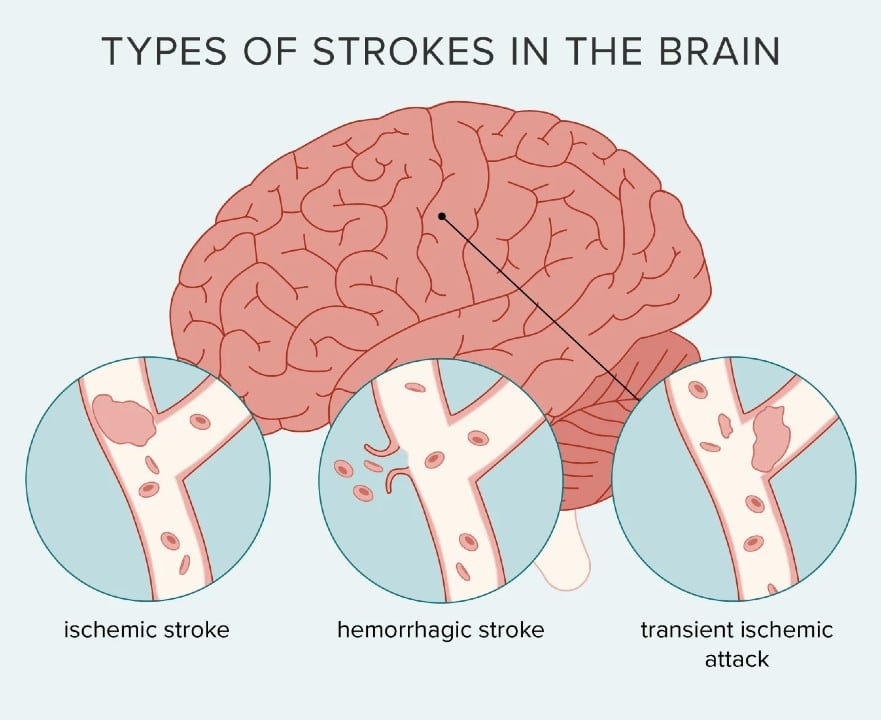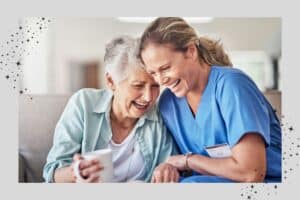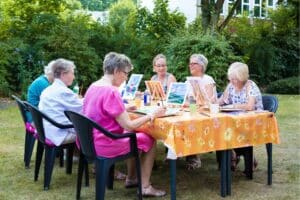As we age, there is increasing concern about overall health and conditions that can impact wellness and daily living. Of the many causes of illness, injury, disability, and death that can impact seniors’ lives in older age, stroke is among the most common.
A stroke and the changes that may result can cause meaningful alterations in seniors’ lives. Understanding what a stroke is and what steps you can take to reduce the risk is crucial to minimizing damage and maximizing stroke recovery.
The months after a loved one experiences a stroke are often challenging. It’s a transition that requires a whole new outlook on care, routine and priorities.
In Ontario, stroke is the third leading cause of death and the leading cause of adult disability – more women than men die from stroke. There are an estimated 25,500 new stroke events in Ontario every year. That means that at least every 30 minutes, one new stroke victim exists in Ontario.
What is a Stroke?
A stroke takes place when the blood supply to the brain is impeded or interrupted, preventing brain cells from getting the necessary oxygen and nutrients. A stroke’s impact on the body is primarily determined by the damaged part of the brain and the amount of damage done.
Types of Strokes
Ischemic Stroke – This type of stroke occurs when there is a blockage in a blood vessel or artery supplying blood to the brain caused by plaque building up inside the arteries and preventing sufficient blood flow. Brain cells begin to die as they are deprived of essential nutrients.
Hemorrhagic Stroke – A less common type of stroke is a hemorrhagic stroke, which occurs when a blood vessel or artery becomes ruptured and starts bleeding into the brain. A brain aneurysm is an example of this type of stroke.
Transient ischemic attack (TIA) – Sometimes called a mini-stroke is caused by a small clot that briefly blocks an artery. Symptoms may only last a few minutes or up to an hour and should be considered a warning sign that a further, more severe stroke could be pending.

Risk Factors for Stroke
A stroke can happen to anyone at any time in their lives, but the risk significantly increases with age (particularly after age 55). For this reason, seniors are generally at a higher risk of stroke, but there are other lifestyle and health-related risk factors that seniors should be aware of. Lifestyle modifications can be made to improve health and well-being and address these potential problems:
- High blood pressure
- Obesity
- Poor diet
- Inactivity
- Diabetes
- Smoking
- High Cholesterol
Many of the risk factors that put people at higher risk for stroke are interrelated and can be addressed and reduced with a few fundamental lifestyle changes. Eating a healthy, nutritious diet combined with regular exercise helps reduce high blood pressure and high cholesterol, which can lead to diabetes and stroke.
What are the Signs of Stroke?
Getting medical attention immediately is absolutely critical when it comes to a stroke. The following are some signs and symptoms to look out for, which signal a need for immediate medical attention.
The Center for Disease Control and Prevention suggests following the F.A.S.T. rule:
- Face – Is one side of the face drooping, or does it feel numb?
- Arms – can the person raise and keep both arms above their head?
- Speech – Is the person’s speech slurred or jumbled? Are they able to repeat a simple sentence?
- Time – Time is of the essence – Call 911 immediately
Signs and symptoms may vary depending on the area of the brain affected, but if any of these symptoms are recognized, do not hesitate to call 911 for assistance. The longer it takes to administer help, the higher the risk for lasting damage.
Stroke Recovery
Much of the treatment after a stroke is focused on rebuilding and relearning any of the functions lost as a result. Various programs assist seniors in recovering and meeting the new challenges they may face following a stroke.
A stroke is a significant event that can alter how seniors live their daily lives. However, being aware of the risk factors, talking to medical professionals about reducing those risks, and general engagement in self-care practices are all beneficial preventative measures.
What should a post-stroke recovery plan look like?
Again, the road to recovery will vary by individual depending on the nature of the stroke and how quickly medical assistance was delivered.
Some general guidelines for stroke recovery may include:
- Setting realistic and achievable goals
- Establishing a healthy and effective routine
- Cognitive therapy to help correct any speech or judgment issues
- Physical therapy with recommended exercises
- Emotional support
- Medication management
- Assistance with daily routines
Caregivers Burnout
Stroke recovery can take a toll on everyone. Caregivers are particularly vulnerable. You may not take a break or look after your health. Juggling roles and providing daily support can be taxing and tiring for even the most devoted person, no matter how happy you are to take on this role. To prevent burnout, it helps to eat well, stay active, get a good night’s sleep and take time for an enjoyable activity.
Get Help!
Promyse Home Care Stroke Recovery assistance is available. Recovering at home has been proven to increase positive outcomes for those who have had a stroke. If you are suffering from burnout and your parent or loved one needs ongoing care at home after a stroke, the healthcare team at Promyse is there to help.
Our team of compassionate caregivers is available 24 hours a day, seven days a week. We are committed to helping seniors regain their mobility, coordination, strength, and cognitive abilities after a stroke.
Resources:



